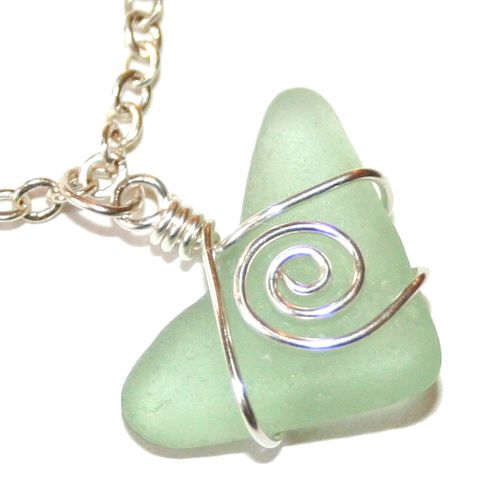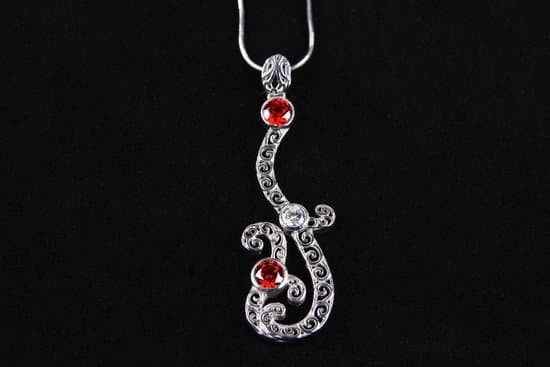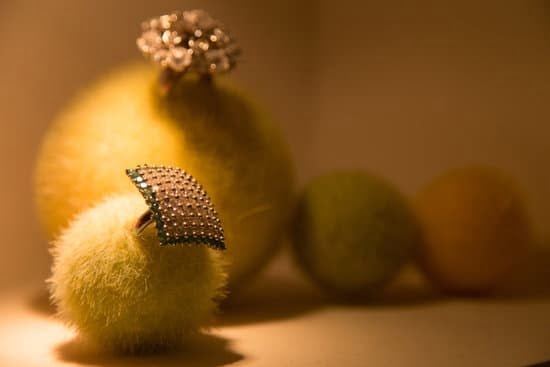Gold jewelry has always held a special allure for people across the globe. Its radiant shine and timeless elegance make it a cherished possession for many. However, with the presence of fake gold in the market, it is essential to know how to distinguish real gold from imitations.
In this article, we will delve into the world of gold jewelry, exploring its value, purity levels, hallmarking, and different testing methods. By the end of this comprehensive guide, readers will have the knowledge and tools necessary to confidently identify if their jewelry is made of real gold.
Real gold jewelry has enduring value that goes beyond mere aesthetics. It symbolizes wealth, success, and prestige. Unlike other metals that tarnish or lose their luster over time, gold continues to shine just as brightly as when it was first crafted.
However, with counterfeit gold flooding the market in recent years, it has become crucial to be able to tell if jewelry is made of real gold or not. Knowing the difference between genuine gold and imposters protects buyers from making costly mistakes and ensures they are investing in something that holds its value.
Understanding the basics of gold is an essential starting point for identifying real gold jewelry. Gold comes in various purity levels or karats including 24k (the purest form), 22k, 18k, and so on. Additionally, most gold jewelry is made using alloys – a combination of gold with other metals like silver or copper – which affects its color and durability. By understanding these fundamentals about gold purity and alloys, individuals can assess the authenticity of their jewelry more accurately.
The Basics of Gold
Gold is a precious metal that has captivated humanity for centuries. Its shimmering beauty, durability, and rarity make it highly desirable and valuable. However, not all gold jewelry is created equal. Understanding the purity and types of gold is essential in determining whether your jewelry is real or fake.
Gold purity is measured in karats (k). Pure gold is known as 24k gold, which means it contains 24 parts of gold out of a total of 24 parts. However, pure gold is soft and malleable, making it unsuitable for most types of jewelry. Therefore, other metals are alloyed with gold to increase its strength and durability.
Commonly used alloys include copper, silver, nickel, and zinc. The addition of these metals also affects the color of the gold jewelry. For example, yellow gold typically contains a higher percentage of copper or silver, while white gold has added nickel or zinc to achieve its silver hue.
Here are some common purity levels you may encounter when purchasing or evaluating gold jewelry:
- 24k Gold: Contains 99.9% pure gold
- 22k Gold: Contains 91.7% pure gold and commonly used in high-quality jewelry
- 18k Gold: Contains 75% pure gold and frequently found in fine jewelry
- 14k Gold: Contains 58.3% pure gold and commonly used in everyday jewelry
- 10k Gold: Contains 41.7% pure wealthwatchgold It’s important to note that lower karatage doesn’t necessarily mean lower quality; it simply indicates a lower percentage of pure gold in the piece.
Understanding the basics of gold purity and types allows you to make more informed decisions when purchasing or assessing the authenticity of your jewelry. By knowing the different karatages and how they affect both the color and durability of your piece, you can have a better understanding of its value and authenticity.
Hallmarking
Hallmarking plays a crucial role in verifying the authenticity and purity of gold jewelry. It is a system that involves applying specific stamps or symbols to indicate various characteristics of the piece, including its gold content. These marks serve as a golden stamp of authenticity and can provide reassurance to buyers about the quality and value of their jewelry.
One commonly recognized hallmark is the karat mark, which indicates the percentage of pure gold present in the piece. For example, 24k gold is considered pure gold, while 14k gold contains 58.3% pure gold. The karat mark helps buyers make informed decisions based on their personal preferences and budget.
Additionally, hallmarking includes other important symbols that denote the manufacturer’s identification and country of origin. For instance, in the United States, pieces are usually marked with “925,” indicating sterling silver quality or “10K,” “14K,” or “18K” for different levels of gold purity.
It is essential for consumers to familiarize themselves with these hallmark symbols and standards prevalent in their region. This knowledge will enable them to distinguish genuine marks from counterfeit ones accurately. Verifying accurate hallmarking information can help buyers confidently recognize real gold jewelry and avoid being deceived by fake imitations.
To summarize:
- Hallmarking involves specific stamps or symbols applied to gold jewelry to verify its authenticity.
- Important hallmarks include karat marks indicating gold purity as well as identification marks for manufacturers and countries.
- Familiarizing oneself with these hallmark symbols and standards is crucial for accurately identifying real gold jewelry.
By understanding hallmarking, buyers gain valuable insights into the true worth of their purchases and can confidently enjoy their genuine gold jewelry without any doubts about its authenticity or value.
Acid Testing
One of the most reliable methods for identifying real gold is through acid testing. This method involves applying a small amount of acid to a scratch made on the jewelry piece and observing the reaction. Acid testing is commonly used by jewelers and is relatively simple to perform with the right materials and knowledge.
Materials required
To conduct an acid test, you will need a few materials:
- Gold testing kit: This typically includes several acids of varying strengths, usually labeled as 10k, 14k, 18k, and 22k. These acids are specifically formulated to react differently with different purity levels of gold.
- Glass plate or unglazed ceramic tile: This provides a non-reactive surface for performing the test.
- Rubbing stone or black touchstone: Used to create a scratch on the jewelry piece for applying the acid.
- Eye protection and gloves: It’s important to protect yourself during these tests as handling acids can be hazardous.
Step-by-step procedure
- Assess the jewelry: Before proceeding with any testing method, closely examine your jewelry piece for any hallmark stamps indicating its purity level. This can provide you with an initial clue about whether it is likely to be real gold.
- Conduct a preliminary scratch test: Using a rubbing stone or black touchstone, make a small scratch on an inconspicuous area of the jewelry piece to expose its underlying metal color (which may differ from surface plating). Ensure that you do not damage precious gemstones if they are present.
- Apply acid to the scratch mark: Choose the appropriate strength of acid based on your assessment of the gold purity level (e.g., 10k, 14k, etc). Gently drop one or two drops of acid onto the scratch mark using a clean dropper. Observe the reaction carefully.
- Analyze the reaction: Genuine gold will show little to no reaction with acid, while alloys or fake gold may produce a visible color change or bubble formation. It is important to note that some jewelry pieces may include a base metal core, which could react with the acid and make it challenging to assess the purity solely based on this test.
- Rinse and clean: After completing the test, rinse the jewelry piece thoroughly with water to remove any residual acid and prevent potential damage.
Acid testing is an effective method, but it requires caution and practice to accurately interpret the results. It is recommended to seek guidance from a professional jeweler or use a certified testing service if you are uncertain about conducting acid tests yourself.
It’s worth noting that this test should not be performed on valuable antique or delicate jewelry pieces, as it can potentially cause damage. In these cases, rely on other identification methods or consult experts for accurate assessments of authenticity.
By utilizing acid testing along with other identification methods mentioned in this guide, individuals can confidently determine whether their gold jewelry is authentic or not.
Magnet Test
The Magnet Test has long been a popular method for determining the authenticity of gold jewelry. The idea behind this test is that since gold is non-magnetic, if a piece of jewelry is attracted to a magnet, it must be fake. However, it is important to separate fact from fiction when it comes to the Magnet Test.
While it is true that gold itself is not magnetic, many other metals commonly used in jewelry, such as stainless steel or nickel, are also non-magnetic. This means that even if a piece of jewelry is not made of real gold, it might still not be attracted to a magnet. So, while the Magnet Test can be informative in some cases, it is certainly unreliable and should not be solely relied upon to determine the authenticity of gold jewelry.
To further demonstrate the limitations of the Magnet Test, consider that some fake gold-plated jewelry may actually have a magnetic core beneath the thin layer of gold. This makes the piece appear genuine when subjected to a magnet test. Therefore, using only this test would lead to inaccurate results.
| Test | Reliability | Pros | Cons |
|---|---|---|---|
| Magnet Test | Unreliable | Easily accessible | Does not differentiate between plated metal and solid gold; cannot determine purity level |
| Acid Test | Reliable | Inexpensive and relatively easy to perform | May damage the jewelry or leave a permanent mark; requires handling strong acids |
| Density Test | Reliable | Can accurately determine purity level; does not damage the jewelry | Requires specialized equipment and expertise; may not be feasible for everyday consumers |
Density Testing
One reliable method of testing the authenticity of gold jewelry is through density testing. Density testing involves measuring the density of an object to determine its true weight and composition. Since gold has a specific density, this test can help identify if jewelry contains real gold or if it is made of a less valuable material.
The principle behind density testing lies in the fact that different metals have different densities. Gold is known for its high density, which means that a small piece of gold will weigh significantly more than the same size piece made of another metal. By comparing the weight and dimensions of a piece of jewelry with the known density of gold, it is possible to determine whether or not it is authentic.
There are various techniques and tools used for conducting density tests on gold jewelry. One common method involves using water displacement to measure the volume and subsequent weight of an item. This technique requires precision measurements and calculations to accurately determine its density. Another method utilizes specialized electronic devices that can measure both the weight and volume simultaneously, providing quick and accurate results.
It’s important to note that while density testing can be a helpful tool in identifying real gold, it should not be relied upon as the sole method of verification. The presence of other indicators such as hallmarking, acid testing, and professional appraisals should also be considered for conclusive results. By combining multiple tests together, individuals can increase their confidence in determining whether their gold jewelry is genuine or not.
Professional Appraisals
When it comes to determining the authenticity of gold jewelry, consulting a certified jewelry appraiser is a crucial step. These experts possess the knowledge and experience to accurately assess the value and purity of gold, providing an unbiased opinion that can give peace of mind to jewelry owners. Here, we will delve into the importance of seeking professional appraisals and provide tips on finding reputable appraisers.
Certified jewelry appraisers are specially trained individuals who have acquired a deep understanding of gemology, metals, and appraisal techniques. They are equipped with the necessary tools and resources to accurately assess gold jewelry and provide an estimate of its worth. During an appraisal, they examine various aspects such as weight, design intricacy, craftsmanship quality, hallmarking, and overall condition.
To find a reputable jewelry appraiser, there are several key factors to consider. First and foremost, ensure that the appraiser has relevant credentials from reputable organizations such as the Gemological Institute of America (GIA) or the American Society of Appraisers (ASA). These certifications demonstrate their expertise in gemstone grading and identification. Additionally, consider their level of experience and ask for references or reviews from previous clients.
Once you have identified potential appraisers, it is important to be prepared for your appointment. Bring any documentation or certificates you may have related to the piece of jewelry being appraised. This can include receipts, diamond certificates, or any other relevant paperwork that may add value or establish provenance. It is also helpful to communicate your specific needs or concerns to the appraiser beforehand so they can address them accordingly.
A professional appraisal can provide valuable insights into not only the authenticity but also the true worth of your gold jewelry. Whether you are looking to sell your piece or simply curious about its value, seeking expert confirmation ensures you make informed decisions based on accurate information. Trusting professionals in this field empowers jewelry buyers and helps them preserve the value of their precious keepsakes.
| Key Factors to Consider | Professional Appraisal Process |
|---|---|
| Relevant credentials from reputable organizations (GIA, ASA) | Examination of weight, design intricacy, craftsmanship quality, hallmarking, and overall condition |
| Level of experience and references/reviews | Possible need for documentation or certificates related to the jewelry being appraised |
| Effective communication of specific needs or concerns beforehand | Evaluation of true worth as well as authenticity |
Common Fake Gold Tests
The Scratch Test
One of the most commonly known tests for determining the authenticity of gold jewelry is the scratch test. This test involves using a sharp object, such as a needle or coin, to create a small scratch on the jewelry piece.
If the scratch leaves a mark that is gold in color and does not reveal any other metals underneath, it is likely that the piece is made of real gold. However, it is important to note that this test can potentially damage the jewelry, especially if it turns out to be fake.
While the scratch test can give you some indication of whether your jewelry is real gold or not, it is not foolproof. Counterfeiters have become increasingly sophisticated and are now able to produce fake gold pieces that can pass this test. Therefore, it is advisable to use additional testing methods in combination with the scratch test to ensure accurate results.
The Ceramic Test
Another popular method used to identify fake gold jewelry is called the ceramic test. This test involves rubbing the jewelry piece against an unglazed ceramic plate or tile. Real gold should leave a visible golden streak on the ceramic surface when rubbed against it. If there is no mark or if the mark left behind appears silvery or black, it suggests that the piece may be made of a base metal with a thin layer of gold plating.
Although the ceramic test can be helpful in detecting counterfeit gold, it also has its limitations. Some counterfeiters have started using materials that mimic real gold’s ability to leave behind a golden streak on ceramics. Additionally, this test may cause slight damage to delicate jewelry pieces or those with intricate designs.
Ultraviolet (UV) Light
Using ultraviolet (UV) light is another method employed by experts to determine if jewelry contains real gold or not. Real gold typically does not react under UV light, meaning it remains unchanged in color. However, some fake gold pieces may exhibit a different color or fluorescence when exposed to UV light. This is due to the presence of other metals or alloys used in the manufacturing process.
While UV light testing can be a useful tool, it is best performed by professionals who have access to specialized equipment and knowledge. They are able to analyze any changes in fluorescence accurately and interpret the results correctly.
By being aware of these common fake gold tests and their limitations, jewelry enthusiasts can make more informed decisions when purchasing gold jewelry. Remember that no single test can provide a definitive answer on its own. It is always wise to combine multiple testing methods and seek guidance from certified experts for accurate results.
Bonus Tips
While hallmarking, acid testing, magnet testing, and density testing are reliable methods for determining the authenticity of gold jewelry, there are also additional indicators that can help buyers differentiate between real gold and fakes. These bonus tips can provide further reassurance when evaluating the legitimacy of gold jewelry.
One important indicator to consider is the color of the metal. Real gold maintains a distinct yellow hue that sets it apart from other metals. While gold alloys can slightly alter the color, genuine gold will never have a completely white or pale appearance. If the jewelry in question appears to be too light or lacks that characteristic warm tone, it is likely not made of real gold.
Weight is another factor to assess when trying to determine if jewelry is made of real gold. Real gold has a higher density than most other metals commonly used in counterfeit jewelry. This means that real gold pieces will feel heavier than their fake counterparts of the same size. However, this method may require some experience and familiarity with handling different types of jewelry materials.
Lastly, detailed craftsmanship can be an indicator of authenticity. Genuine gold jewelry often exhibits fine craftsmanship and attention to detail. Look for clean lines and smooth finishes on intricate designs or engravings. High-quality manufacturing standards suggest that the piece is likely made from real gold instead of cheaper imitations.
By considering these additional indicators along with conducting various tests discussed in this article, buyers can confidently determine if their jewelry is truly made of real gold before making any purchases or investments.
Conclusion
In conclusion, having the ability to differentiate real gold from fake is crucial for jewelry buyers. The enduring appeal and value of gold jewelry make it a popular choice, but counterfeit pieces can deceive even the most experienced eye. This article has provided a comprehensive guide on how to tell if jewelry is made of real gold, empowering readers with the necessary knowledge to make smarter purchases and preserve the value of their precious keepsakes.
Throughout this article, we have discussed various methods for identifying real gold jewelry. From understanding the basics of gold purity and types to exploring hallmarking standards and conducting tests such as acid testing, magnet testing, density testing, and professional appraisals. Each method plays a vital role in confirming the authenticity of gold jewelry.
It is important to note that relying on a single test may not always provide accurate results. Therefore, it is recommended to conduct multiple tests and seek professional advice when needed. Consulting certified jewelry appraisers can be invaluable in providing accurate assessments of gold authenticity.
By following this comprehensive guide, readers can confidently determine if their jewelry is made of real gold. Armed with this knowledge, they can make informed decisions when purchasing or investing in gold jewelry, ensuring that their pieces are genuine and maintaining their value over time.

Welcome to my jewelry blog! My name is Sarah and I am the owner of this blog.
I love making jewelry and sharing my creations with others.
So whether you’re someone who loves wearing jewelry yourself or simply enjoys learning about it, be sure to check out my blog for insightful posts on everything related to this exciting topic!





